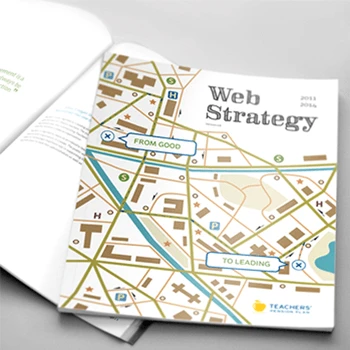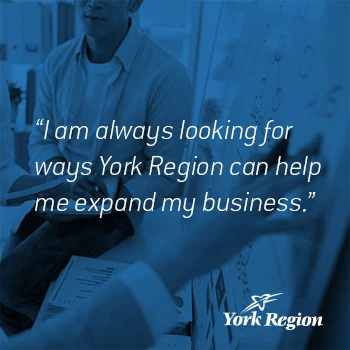What is customer experience strategy and why does every organization need one?
Customer experience strategy creates a deliberate roadmap for how people discover, engage with, and remain loyal to your organization. Using our Experience Thinking framework, we design connected experiences across brand, content, product, and service touchpoints that turn customers into users, then into long-term advocates. Without intentional experience design, organizations often create disconnected experiences that confuse people and undermine business goals.
Tip: Map your current customer touchpoints across all four Experience Thinking areas to identify where disconnected experiences might be causing customer drop-off or confusion.
How do you define the difference between customer experience and user experience?
Customer experience focuses on how people discover value and make purchasing decisions, while user experience centers on how people interact with and use your products or services. In our Experience Thinking framework, we recognize that the same person moves through different roles - from customer to user to client - each requiring different experience design approaches. Both are essential parts of the complete experience lifecycle.
Tip: Design specifically for each role transition, ensuring smooth handoffs as people move from discovery to usage to advocacy.
What makes Experience Thinking different from traditional customer experience approaches?
Experience Thinking integrates four connected areas - brand, content, product, and service experiences - into a unified strategy rather than optimizing individual touchpoints in isolation. This holistic approach ensures all experience elements work together to create connected journeys that feel seamless to your audience. Traditional approaches often focus on single channels or departments, creating gaps in the overall experience.
Tip: Audit your current experience strategy against all four Experience Thinking quadrants to identify strategic gaps where siloed efforts might be limiting overall impact.
How do you approach experience strategy for different industry contexts?
Every industry has unique customer behaviors, regulatory requirements, and business models that shape experience design. Our experience across technology, energy, utilities, and media sectors shows that while the Experience Thinking framework remains consistent, the application varies significantly. We adapt research methods, design approaches, and success metrics to fit your specific industry dynamics and customer expectations.
Tip: Focus on understanding your industry's unique experience characteristics rather than copying approaches from other sectors.
What role does foresight design play in customer experience strategy?
Foresight design helps organizations anticipate future customer behaviors and market changes rather than just responding to current needs. We use strategic foresight methods to explore possible, probable, and preferable futures for your customer experience, enabling proactive strategy development. This approach helps you prepare for emerging technologies, changing expectations, and evolving business models before they disrupt your current experience.
Tip: Include scenario planning and trend analysis in your experience strategy development to build adaptive capabilities for future changes.
How does experience strategy connect to business outcomes and competitive advantage?
Experience strategy becomes transformational when it shapes business models and drives competitive differentiation, not just improves satisfaction scores. We help organizations identify experience-driven advantages that are difficult for competitors to replicate, develop new value propositions based on experience excellence, and create capabilities that sustain experience leadership over time.
Tip: Focus experience strategy on unique competitive advantages and business model innovation rather than just improving current satisfaction metrics.
What's the typical timeline for developing and implementing a customer experience strategy?
Experience strategy development involves discovery, strategy creation, and implementation phases that typically span several months to a year depending on organizational complexity. We use an iterative approach that includes stakeholder research, customer journey analysis, experience design, and pilot testing before full implementation. The goal is creating lasting transformation rather than quick fixes.
Tip: Plan for strategy development and implementation as separate but connected phases, with validation checkpoints throughout the process.
What research methods do you use to understand customer experience?
We combine observational techniques like ethnographic studies and contextual interviews with analytical methods including journey mapping and service blueprinting. Our approach captures both what people do and why they do it, revealing motivations, emotions, and unmet needs across the complete experience lifecycle. We emphasize understanding behavior in natural contexts rather than relying on what people say they do.
Tip: Prioritize observational research over surveys when understanding complex customer behaviors and motivations.
How do you research across the complete experience lifecycle?
Using the Experience Thinking framework, we research how people move from awareness through engagement to advocacy, examining brand perception, content consumption, product usage, and service interactions at each stage. This lifecycle approach reveals critical moments where experiences can strengthen or weaken relationships, helping prioritize improvement efforts for maximum impact.
Tip: Focus research resources on lifecycle transition points where experience quality most impacts customer retention and advocacy.
What's your approach to understanding customer emotions and motivations?
We use projective techniques, emotion mapping, and story-based interviews to uncover deeper motivations that drive customer behavior. Experience Thinking recognizes that emotions are created through the interaction of timing, intensity, meaning, and coverage across experience touchpoints. Understanding these emotional drivers helps design experiences that create genuine connection and loyalty.
Tip: Include emotional journey mapping alongside functional journey mapping to understand both rational and emotional drivers of customer behavior.
How do you validate customer experience insights with internal stakeholders?
We facilitate collaborative sessions where customer insights meet business knowledge, using techniques like assumption mapping, stakeholder interviews, and cross-functional workshops. The goal is creating shared understanding between customer-facing staff who see daily interactions and business leaders who understand strategic constraints. This validation ensures experience strategies are both customer-centered and business-viable.
Tip: Include front-line staff in insight validation sessions since they often have the most direct customer contact and practical implementation knowledge.
What's your approach to competitive experience analysis?
We analyze competitor experience strategies and business models, not just interface features or service offerings. This includes examining how competitors create connected experiences across their brand, content, product, and service touchpoints, identifying experience gaps in the market, and understanding where your organization can create distinctive experience advantages.
Tip: Focus competitive analysis on experience architecture and connection strategies rather than just cataloging individual touchpoint features.
How do you research customer experience across different channels and platforms?
We map how customers move between digital and physical touchpoints, understanding their expectations for consistency and their tolerance for variation across channels. Research includes cross-channel journey analysis, platform-specific behavior studies, and omnichannel experience testing to ensure connected experiences regardless of how people choose to engage with your organization.
Tip: Design research plans that follow actual cross-channel customer paths rather than studying individual channels in isolation.
What role does data analytics play in your customer experience research?
We combine quantitative behavioral data with qualitative insights to understand both what happens and why it happens in customer experiences. Analytics help identify patterns and trends across large customer populations, while qualitative research explains the human motivations behind those patterns. This mixed-method approach provides both statistical validation and human understanding.
Tip: Use analytics to identify priority areas for qualitative investigation rather than treating quantitative and qualitative research as separate activities.
How do you translate research insights into actionable experience strategy?
We create experience roadmaps that connect customer insights to specific business actions, using the Experience Thinking framework to ensure brand, content, product, and service improvements work together. Strategy development includes priority setting, resource allocation guidance, and success metrics that align with business objectives. The result is a strategic plan that your team can implement systematically.
Tip: Include implementation priority frameworks in your strategy development to help your team focus efforts on changes that create the most customer and business impact.
What's your approach to experience vision and goal setting?
We help organizations define their intended experience using concrete, measurable descriptions of how customers should feel and behave throughout their relationship with your organization. Vision setting involves understanding your unique value proposition, competitive positioning, and organizational capabilities to create realistic but ambitious experience goals that guide all design decisions.
Tip: Create experience vision statements that include both emotional and behavioral outcomes to guide decision-making across all customer touchpoints.
How do you prioritize experience improvements across multiple touchpoints?
Using journey mapping and impact analysis, we identify which experience moments most influence customer decisions and loyalty. Priority setting considers both customer impact and business feasibility, focusing resources on improvements that strengthen the complete experience rather than optimizing individual touchpoints. The Experience Thinking framework helps ensure improvements work together rather than in isolation.
Tip: Prioritize improvements that create positive ripple effects across multiple touchpoints rather than just fixing individual pain points.
What's your approach to experience personalization and segmentation strategy?
We develop segmentation approaches based on experience preferences and behavior patterns rather than just demographics. This includes understanding how different customer segments prefer to engage across brand, content, product, and service touchpoints, then creating flexible experience architectures that adapt to segment needs while maintaining brand consistency.
Tip: Base segmentation on experience behaviors and preferences rather than demographic characteristics to create more relevant and effective experience personalization.
How do you integrate experience strategy with existing business strategy?
Experience strategy works best when it influences business decisions rather than just implementing them. We help position customer experience as a strategic capability that informs product development, marketing approach, operations design, and growth planning. The goal is making experience thinking a shared organizational capability rather than just a customer service function.
Tip: Include experience considerations in business planning processes rather than developing experience strategy as a separate initiative.
What role does employee experience play in customer experience strategy?
Employee experience directly impacts customer experience since staff interactions shape how customers perceive your brand and services. We examine how employee tools, training, and culture affect their ability to deliver intended customer experiences. Strategy includes both customer-facing and employee-facing improvements that work together to create consistent experiences.
Tip: Include employee experience assessment in customer experience strategy development since staff satisfaction directly affects customer satisfaction.
How do you approach experience strategy for digital transformation initiatives?
Digital transformation provides opportunities to redesign experiences rather than just digitize existing processes. We help organizations use technology changes as catalysts for experience improvement, ensuring new digital capabilities enhance rather than complicate customer journeys. The focus is on experience outcomes rather than technology implementation.
Tip: Use digital transformation as an opportunity to redesign complete customer experiences rather than just moving existing processes online.
What's your approach to experience strategy implementation planning?
Implementation success requires systematic change management that addresses organizational capabilities, resource allocation, and success measurement. We create detailed roadmaps that specify what changes to make, in what order, and how to measure progress. Implementation planning includes staff training, process redesign, and technology requirements that support improved experiences.
Tip: Create implementation plans that include both quick wins and long-term transformation goals to maintain momentum while building toward larger changes.
How do you help organizations build internal experience capabilities?
We develop organizational capabilities through training, process design, and tool creation that enable your team to manage experience strategy independently. This includes establishing experience governance frameworks, measurement systems, and decision-making processes that embed experience thinking into business operations. The goal is building lasting capabilities rather than creating dependency.
Tip: Invest in building internal experience analysis and design capabilities alongside implementing immediate improvements to create sustainable competitive advantage.
What's your approach to change management for experience transformation?
Experience transformation requires cultural change that makes customer-centered thinking a shared organizational capability. We help address resistance through demonstration and partnership rather than education alone, creating safe spaces for experimentation and incremental value demonstration. Change management includes coalition building and pilot program strategies that build organizational confidence.
Tip: Start change management with willing departments and success demonstration rather than organization-wide mandates to build natural support for experience transformation.
How do you measure the success of customer experience strategy initiatives?
We establish measurement frameworks that connect experience quality to business outcomes, tracking both leading indicators like customer sentiment and lagging indicators like retention and revenue. Measurement includes journey-level metrics that capture connected experience quality rather than just individual touchpoint performance. Success measurement evolves from tactical to strategic as organizations mature.
Tip: Develop measurement approaches that track experience quality at the journey level rather than just individual touchpoint satisfaction to understand total experience impact.
What's your approach to experience strategy pilot programs and testing?
We design pilot programs that test experience strategies in controlled environments before full implementation, using rapid prototyping and iterative validation to refine approaches based on real customer feedback. Pilots include both customer testing and internal feasibility assessment to ensure strategies work from both audience and organizational perspectives.
Tip: Design pilot programs that test both customer acceptance and organizational capability to execute experience strategies rather than just customer response to experience concepts.
How do you handle experience strategy implementation across large organizations?
Large organizations require sophisticated coordination approaches that balance consistency with local adaptation needs. We develop governance frameworks that provide strategic guidance while enabling appropriate customization for different business units, markets, or customer segments. Implementation includes creating shared language, aligned objectives, and collaborative workflows across functions.
Tip: Create clear guidelines that specify which experience elements require organizational consistency and which allow local adaptation rather than standardizing everything.
What support do you provide during experience strategy rollout?
Implementation support includes ongoing consultation, progress monitoring, and course correction as organizations apply new experience strategies. We provide training for internal champions, troubleshooting for implementation challenges, and refinement guidance based on early results. Support focuses on building organizational confidence and capability rather than managing every detail.
Tip: Plan for implementation support that includes both technical guidance and change management assistance to address unexpected challenges during rollout.
How do you use journey mapping in customer experience strategy development?
Journey mapping captures the complete experience lifecycle from customer awareness through advocacy, revealing emotional highs and lows, process breakdowns, and connection opportunities. Using Experience Thinking principles, we map how brand, content, product, and service experiences connect throughout the journey rather than treating them as separate interactions. This holistic view identifies strategic improvement opportunities.
Tip: Create journey maps that show cross-functional touchpoint connections rather than departmental handoffs to identify where better collaboration could improve customer experience.
What's your approach to service blueprinting and backend process design?
Service blueprinting reveals how internal processes and systems support customer experience delivery, identifying where operational improvements can enhance customer experience. We examine front-stage and backstage operations to ensure internal capabilities align with intended customer experiences. Blueprint analysis includes technology systems, staff training, and process design that enable consistent experience delivery.
Tip: Include service blueprinting in experience strategy to identify where operational changes can improve customer experience without requiring customer-facing redesign.
How do you approach experience ecosystem mapping and stakeholder analysis?
Experience ecosystems include all partners, channels, and influences that affect customer experience beyond your direct control. We map ecosystem relationships, identify stakeholder influence on customer experience, and develop collaboration strategies that align partner capabilities with experience goals. Ecosystem thinking recognizes that customer experience often depends on external relationships and partnerships.
Tip: Include ecosystem mapping in experience strategy to identify partnership opportunities and external dependencies that affect customer experience quality.
What's your approach to experience prototyping and concept testing?
We create experience prototypes that test strategic concepts before full implementation, using role-playing, service simulations, and experience mockups that help stakeholders understand proposed changes. Prototyping includes testing both customer response and organizational capability to deliver new experience approaches. This validation reduces implementation risk and builds organizational confidence.
Tip: Use experience prototyping to test organizational capability and customer acceptance simultaneously rather than just validating customer preferences for experience concepts.
How do you apply foresight design methods to anticipate future customer needs?
Foresight design combines strategic foresight with design thinking to explore possible, probable, and preferable customer experience futures. We use scenario planning, trend analysis, and speculative design methods to help organizations prepare for changing customer expectations, emerging technologies, and evolving business models. This approach creates adaptive strategies that remain relevant as conditions change.
Tip: Include scenario planning in experience strategy development to build organizational capability for adapting to future changes rather than just optimizing current conditions.
What's your approach to co-design and stakeholder collaboration in strategy development?
Co-design brings customers, employees, and business stakeholders together to create shared vision and ownership of experience strategy. We facilitate collaborative sessions that leverage diverse perspectives while maintaining strategic focus, using structured design methods that produce actionable outcomes. Co-design ensures strategy reflects real needs and capabilities rather than assumptions.
Tip: Include actual customers in co-design sessions rather than just internal stakeholders to ensure experience strategies reflect real customer perspectives and needs.
How does customer experience strategy drive business model innovation?
Experience excellence can become the foundation for new value propositions, revenue models, and competitive positioning. We help organizations identify how superior experience capability creates business opportunities, including subscription models, platform strategies, and service expansion that leverage experience advantages. Business model innovation focuses on sustainable differentiation through experience excellence.
Tip: Explore how experience capabilities could enable new revenue streams or business model innovations rather than just improving current operations.
What's your approach to experience-driven organizational design?
Organizational design affects experience delivery through decision-making authority, resource allocation, and collaboration patterns. We help organizations align structure with experience goals, creating cross-functional capabilities and governance systems that support connected experience delivery. Organizational design includes both formal structure and informal collaboration patterns that enable experience excellence.
Tip: Audit organizational structure and decision-making processes for experience impact rather than just efficiency when considering organizational design changes.
How do you help organizations develop experience innovation capabilities?
Experience innovation requires systematic approaches that balance breakthrough exploration with operational excellence. We help establish innovation frameworks, experimentation processes, and portfolio management approaches that allocate resources between experience optimization and experience reinvention. Innovation capabilities include both creative exploration and systematic validation methods.
Tip: Allocate specific resources to experience innovation exploration rather than trying to innovate within existing optimization processes to ensure breakthrough thinking gets adequate attention.
What's your approach to mergers, acquisitions, and experience integration?
Mergers and acquisitions create opportunities and challenges for customer experience continuity. We help organizations assess experience compatibility, develop integration strategies, and create unified experience approaches that leverage the best capabilities from both organizations. Integration planning includes both customer communication and internal process alignment.
Tip: Include experience integration planning early in merger and acquisition processes rather than treating customer experience as a post-merger consideration.
How does experience strategy support international expansion and market entry?
International expansion requires experience strategies that maintain brand consistency while adapting to local market expectations and cultural differences. We help organizations distinguish between universal experience principles and local adaptation opportunities, creating frameworks that scale globally while remaining locally relevant. Market entry includes experience localization planning and cultural adaptation strategies.
Tip: Create clear frameworks that specify which experience elements require global consistency and which allow local market adaptation rather than standardizing everything or localizing everything.
What's your approach to crisis management and experience continuity?
Crisis situations test experience strategy resilience and reveal organizational experience capabilities under pressure. We help organizations develop crisis communication plans, service continuity strategies, and recovery approaches that maintain customer trust during difficult periods. Crisis planning includes both immediate response and long-term relationship recovery strategies.
Tip: Include experience continuity planning in crisis management preparation to maintain customer relationships during operational disruptions.
How do you adapt experience strategy for technology sector organizations?
Technology organizations often focus on product capabilities rather than complete customer experience. We help tech companies apply Experience Thinking to connect product innovation with brand positioning, content strategy, and service delivery. Technology sector experience strategy includes user onboarding, feature adoption, and customer success programs that turn product users into advocates.
Tip: Focus technology sector experience strategy on customer success and advocacy rather than just product usability to create sustainable competitive advantages.
What's your approach to experience strategy for regulated industries?
Regulated industries face compliance requirements that can constrain experience design choices. We help organizations create excellent experiences within regulatory boundaries, using creativity and strategic thinking to find experience improvement opportunities that enhance customer satisfaction while meeting compliance needs. Regulated industry strategy includes stakeholder education and advocacy planning.
Tip: Include regulatory stakeholders in experience strategy development to identify improvement opportunities that enhance both compliance and customer satisfaction.
How do you integrate AI and automation into customer experience strategy?
AI integration requires careful evaluation of where artificial intelligence enhances human capabilities versus where human judgment remains essential. We help organizations identify appropriate AI applications for customer service, personalization, and experience optimization while maintaining authentic human connection where it matters most. AI strategy includes both capability assessment and ethical implementation frameworks that augment rather than replace human experience delivery.
Tip: Start AI integration with data analysis and pattern recognition tasks rather than customer-facing interactions to build confidence and understanding before expanding AI involvement in direct customer experience.
What's your approach to experience strategy for omnichannel customer journeys?
Omnichannel strategy requires understanding how customers move between digital and physical touchpoints, creating consistent experience quality regardless of channel choice. We design channel integration approaches that leverage each channel's strengths while maintaining experience continuity. Omnichannel strategy includes both technological integration and organizational coordination that enables seamless customer experiences.
Tip: Map actual cross-channel customer paths rather than designing individual channel experiences to understand true omnichannel behavior patterns and expectations.
How do you approach experience strategy for B2B organizations?
B2B experience strategy requires understanding complex decision-making processes, multiple stakeholder perspectives, and long-term relationship dynamics. We examine how business customers move through awareness, evaluation, implementation, and renewal phases, designing experiences that address both rational and emotional factors in business decision-making.
Tip: Map B2B customer experience across complete business cycles rather than just sales processes to understand long-term relationship dynamics and renewal factors.
How do you approach experience strategy for subscription and membership models?
Subscription models require experience strategies that focus on ongoing value delivery and relationship deepening rather than single transaction optimization. We examine how to create continued engagement, prevent churn, and increase customer lifetime value through superior ongoing experiences. Subscription strategy includes onboarding, engagement, and renewal experiences that build lasting loyalty.
Tip: Design subscription experience strategy around customer success and value realization rather than just service delivery to increase retention and advocacy.
What's your approach to experience personalization without privacy invasion?
Personalization strategy balances relevant, customized experiences with customer privacy and data protection requirements. We help organizations create personalization approaches that use customer data responsibly while delivering meaningful customization. Privacy-conscious personalization includes transparent data usage, customer control options, and value exchange that customers understand and appreciate.
Tip: Create personalization strategies that provide clear customer value in exchange for data usage rather than just collecting data for organizational convenience.
What's your collaborative approach to working with internal experience professionals?
We work alongside your existing customer experience, UX, and marketing professionals to enhance capabilities rather than replace them. Our collaboration includes knowledge transfer, methodology enhancement, and strategic perspective that builds internal expertise while delivering immediate strategy improvements. Partnership focuses on capability building and shared success rather than external dependency.
Tip: Structure partnerships that build internal capabilities alongside delivering project outcomes rather than just outsourcing strategy development.
How do you handle knowledge transfer and organizational learning?
Knowledge transfer includes systematic documentation, hands-on training, and mentorship that enables your organization to continue developing experience strategy independently. We create tools, frameworks, and processes that support ongoing strategy refinement and implementation. Learning includes both methodology transfer and strategic thinking development that builds lasting organizational capability.
Tip: Include structured knowledge transfer planning in experience strategy projects to ensure your organization can evolve and improve strategies independently.
What's your approach to long-term experience strategy partnerships?
Long-term partnerships focus on ongoing strategy evolution and organizational development rather than project-based interventions. We provide strategic guidance, capability assessment, and innovation support that helps organizations adapt experience strategies as markets and customer expectations evolve. Partnership includes both strategic consulting and tactical support as needed.
Tip: Consider long-term experience strategy partnerships for ongoing capability development and strategic adaptation rather than just project-based strategy development.
How do you customize experience strategy approaches for different organizational contexts?
Every organization has unique culture, capabilities, and constraints that affect experience strategy implementation. We adapt our Experience Thinking framework and methods to fit your organizational context, creating strategies that leverage existing strengths while addressing capability gaps. Customization includes both methodology adaptation and organizational development that fits your specific situation.
Tip: Include organizational assessment in experience strategy development to ensure strategic approaches align with your culture and capabilities rather than assuming one-size-fits-all solutions.
What's your approach to experience strategy project communication and updates?
Project communication includes regular progress updates, preliminary findings sharing, and milestone reporting that keeps stakeholders informed and engaged throughout strategy development. We provide both tactical updates on research progress and strategic insights as they emerge, maintaining transparency while managing stakeholder expectations throughout the collaborative process.
Tip: Establish regular communication rhythms with diverse stakeholder groups to maintain engagement and gather input throughout strategy development rather than waiting until completion.
How do you ensure maximum value from customer experience strategy investments?
Value maximization requires clear objectives, rigorous methodology, actionable insights, and implementation guidance that creates lasting competitive advantage. We focus on developing organizational capabilities and strategic frameworks that continue delivering value long after initial strategy development. Investment value includes both immediate improvements and lasting capability development.
Tip: Include long-term capability development in experience strategy projects to ensure investment value continues growing rather than just solving immediate experience challenges.
What's your approach to building experience governance and organizational maturity?
Experience governance provides strategic guidance without stifling innovation, establishing decision-making authorities and quality standards that maintain consistency while enabling experimentation. We help organizations evolve from tactical execution to strategic influence, developing mature capabilities in experience architecture and systems thinking that create sustainable competitive advantages.
Tip: Focus governance development on experience outcomes and strategic principles rather than detailed process control to maintain innovation capability while ensuring consistency.
How do you help organizations develop long-term experience leadership?
Experience leadership requires skills in strategic communication, stakeholder collaboration, and organizational influence that embed experience thinking into business decision-making. We help develop leaders who can build coalitions, communicate experience value in business terms, and create culture change that makes customer-centered thinking a shared organizational capability rather than just departmental responsibility.
Tip: Develop experience leadership capabilities that focus on organizational transformation and strategic influence rather than just customer service management skills.












